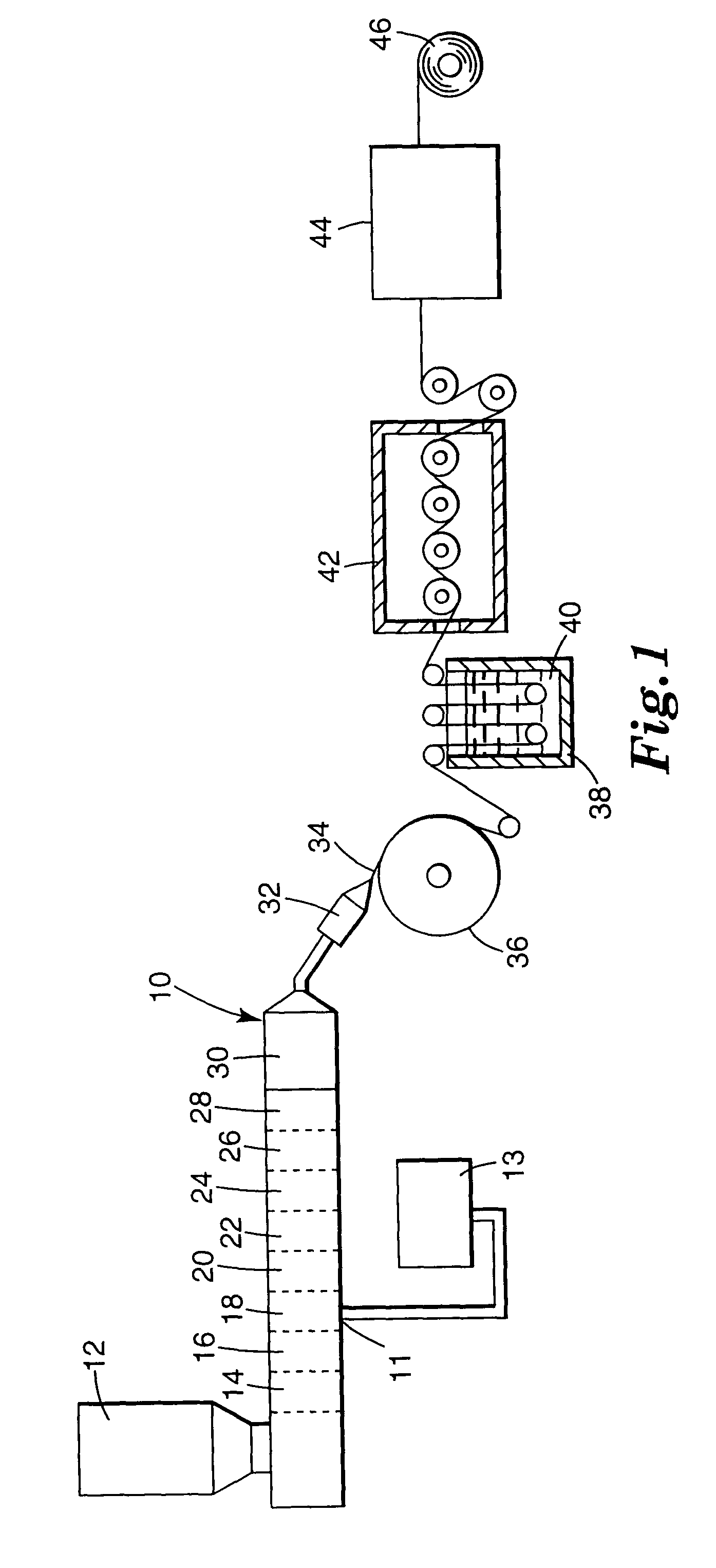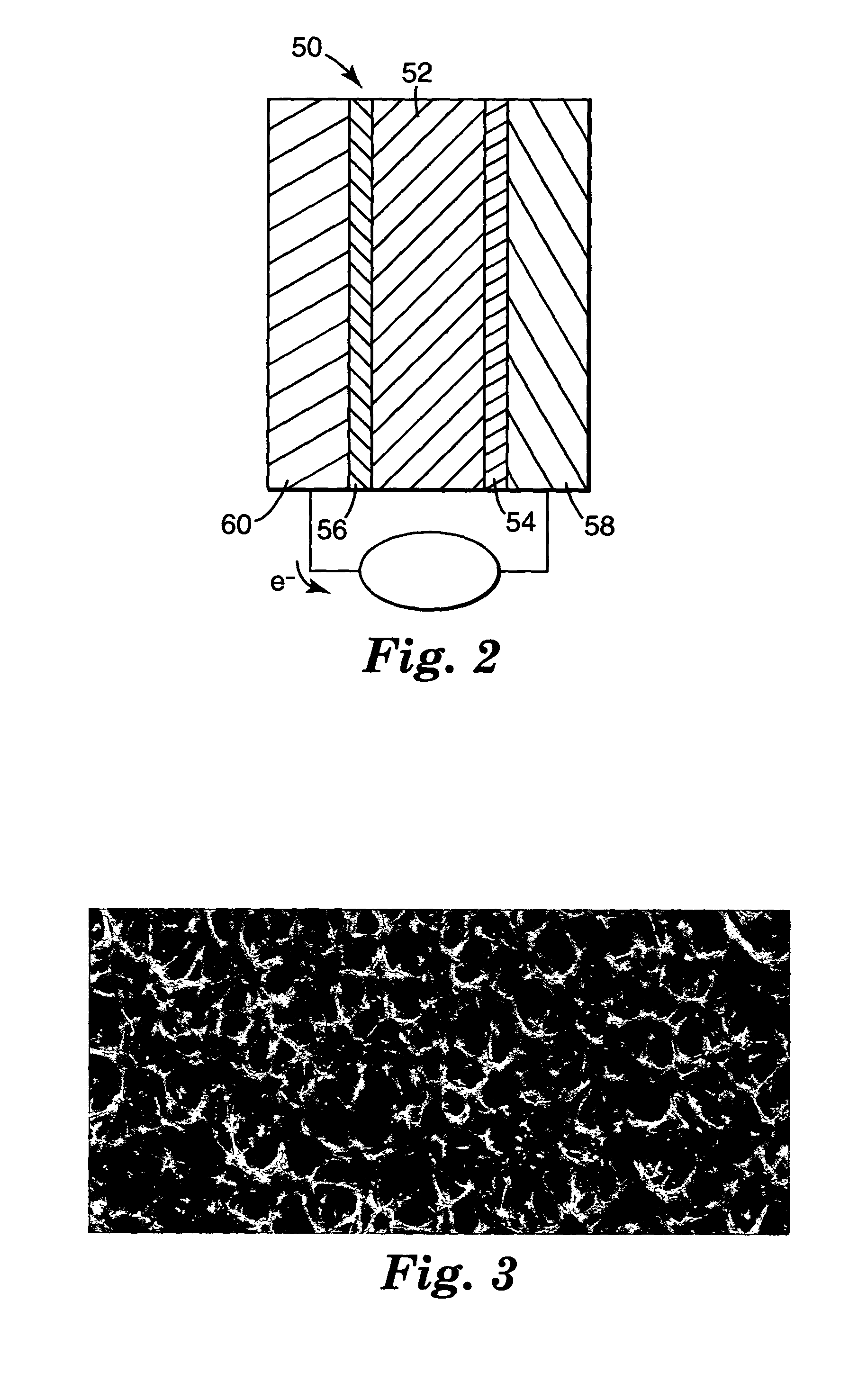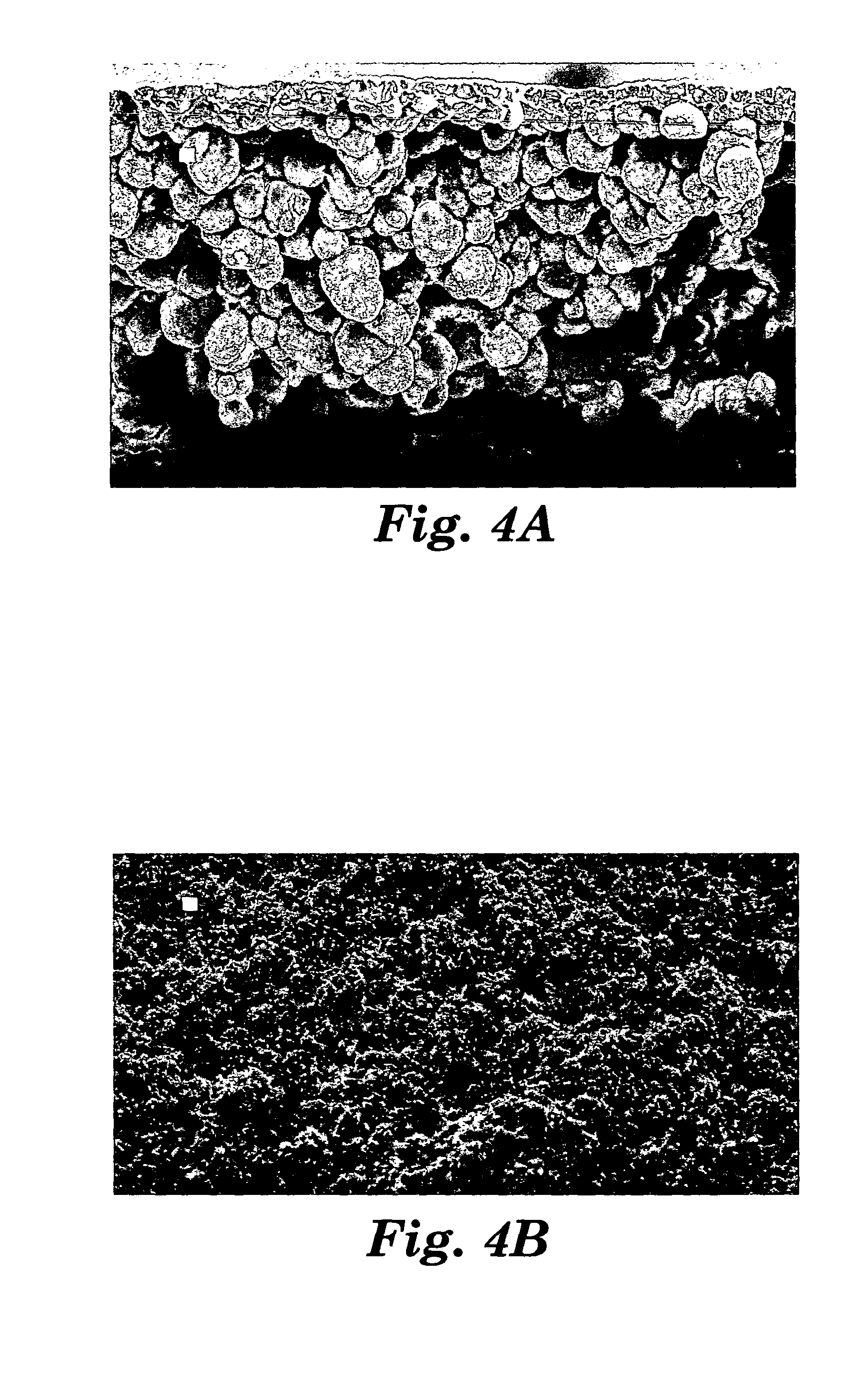Microporous PVDF films
a technology of microporous films and film layers, applied in the field of microporous films, can solve problems such as affecting the utility of membranes
- Summary
- Abstract
- Description
- Claims
- Application Information
AI Technical Summary
Benefits of technology
Problems solved by technology
Method used
Image
Examples
example 1-7
[0085]Microporous PVDF films were prepared using apparatus similar to that shown in FIG. 1 using the method described below. The properties of these films are shown below in TABLE 1. TABLE 1 illustrates the effectiveness of CI 69800 Pigment Blue 60, CI 71130 Pigment Red 179 and PTFE as nucleating agents compared to a non-nucleated control PVDF film. The nucleating agent used and the amount were varied between the films and is noted in TABLE 1 as percent by total weight of the melt blend. The thickness of each film was measured and is shown in TABLE 1. The break tensile strength of the films in both the machine direction (MD) and transverse direction (TD) was measured. The nucleated films demonstrated superior break strength and elongation compared to the non-nucleated control which could not be oriented to any appreciable extent.
[0086]With reference to FIG. 1, the PVDF polymer pellets (SOLEF 1012) were introduced into the hopper 12 of a 25 mm co-rotating twin-screw extruder with an ...
examples 8-19
[0089]Microporous PVDF films of Examples 10-17 and 19 were prepared as in Examples 1-7 (i.e. samples cut and placed in frames measuring 15 cm by 28 cm and then placed in small pans of deionized water for 20 minutes). The type of PVDF resin, the polymer to diluent ratio, the chrome roll temperature (i.e. the rate of cooling), and the stretch ratios and temperatures, were varied to produce a range of properties as shown in TABLE 2 below. P.B. 60 was used as the nucleator at various percentages by total weight of the melt blend. Examples 8-12 and 14 had a prewashed TRIACETIN content of 50% by weight, Example 13 had a prewashed TRIACETIN content of 55% by weight, and Examples 15-19 had a prewashed TRIACETIN content of 58% by weight. The chrome roll was varied from 52° C. to 82° C. Subsequent to the chrome roll, the quenched extrudate of Examples 8, 9, and 18 was fed through a water wash bath maintained at ambient temperature (22° C.) to remove the glyceryl triacetate diluent.
[0090]The w...
examples 20-25
[0092]Microporous PVDF films for use as PEMs were prepared as in Examples 10-17 and 19 except the films were produced on a 40 mm co-rotating twin-screw extruder using an extrusion rate of 9 to 11.4 kilograms per hour and a barrel temperature profile of 216° C. 271° C., 221° C., 188° C., 188° C., 188° C., and 188° C. A screw speed of 150 RPM was used. The melt blend comprised PVDF and glyceryl triacetate diluent in a ratio ranging from approximately from 45:55 to approximately 40:60. CI 69800 Pigment Blue 60 was added to the melt blend in a concentration of approximately 0.4 percent by total weight of the melt blend. The melt blend was pumped through a double-chromed coat-hanger slot film die onto a cooled, patterned chrome roll. The chrome roll was engraved with a series of intersecting knurling lines (25 lines / cm) resulting in a series of raised pyramidal structures across the roll face having a height of approximately 140 microns. The chrome roll temperature ranged from approximat...
PUM
| Property | Measurement | Unit |
|---|---|---|
| melt flow index | aaaaa | aaaaa |
| pore size | aaaaa | aaaaa |
| thickness | aaaaa | aaaaa |
Abstract
Description
Claims
Application Information
 Login to View More
Login to View More - R&D
- Intellectual Property
- Life Sciences
- Materials
- Tech Scout
- Unparalleled Data Quality
- Higher Quality Content
- 60% Fewer Hallucinations
Browse by: Latest US Patents, China's latest patents, Technical Efficacy Thesaurus, Application Domain, Technology Topic, Popular Technical Reports.
© 2025 PatSnap. All rights reserved.Legal|Privacy policy|Modern Slavery Act Transparency Statement|Sitemap|About US| Contact US: help@patsnap.com



